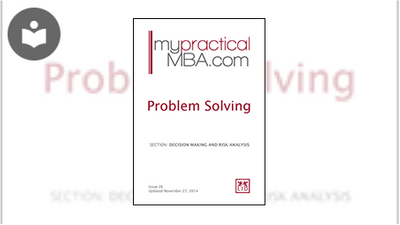Problem Solving: Finding Creative Solutions
- 18m
- LID Editorial
- LID Publishing
- 2015
The need to solve problems arises throughout organisations. Problem solving involves a logical and systematic approach to defining the problem, generating solutions and then choosing and implementing the best option. However, there are difficulties and hidden traps within problem solving, such as the danger of over-analysis. Often, what is really required is nothing more than a period of thought and discussion.
Common sense is a large part of problem solving but two factors also need to be taken into account. First, the decision maker’s personal style and, as a consequence of this, their ability to adopt the right approach at the right time. Second, the need to test and perfect solutions. For example: scenario planning is valuable in testing strategic decisions, ratios are useful when assessing quantitative data, simply talking to customers is helpful if decisions relate diectly to customers, and so on.
In this Book
-
Problem Solving—Finding creative solutions
-
Overview
-
Benefits of Problem Solving






